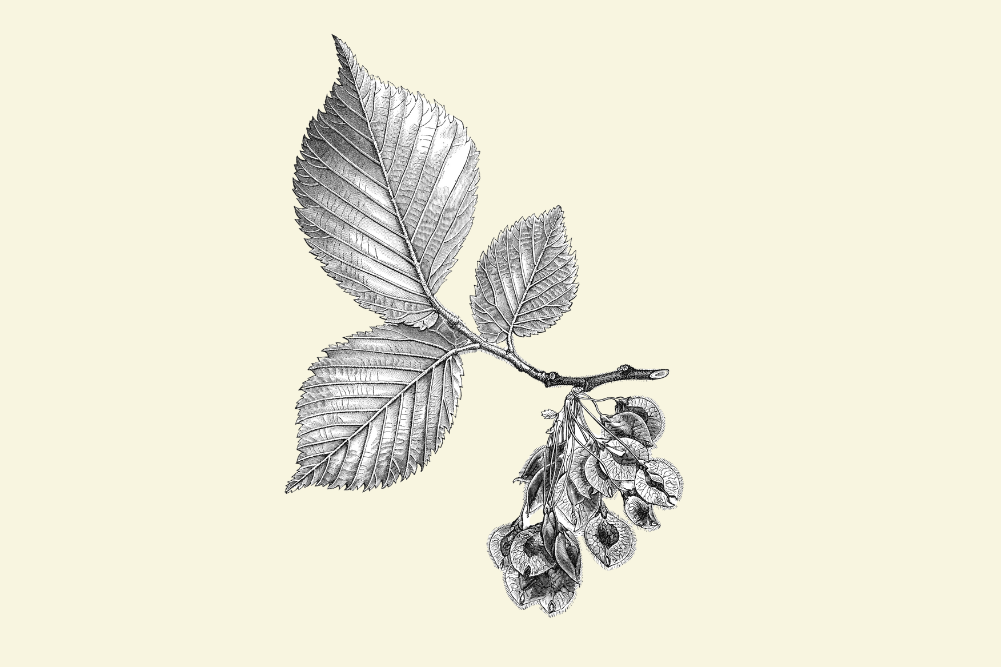How to beat the bugs naturally
The coughs and colds of winter can be distressing and limit your ability to enjoy life. Sometimes, they can linger on and on and the temptation is to dive for an antibiotic to knock the whole thing on the head. This rarely works, but there are natural ways to keep colds and flu at bay.
Common colds, flus, most coughs and sore throats are caused by a viral infection, which must be overcome and defeated by your own immune system. Taking antibiotics will not stop your symptoms getting worse or shorten the duration of a cold. Antibiotics are also not effective against most coughs. Saving antibiotics for when they’re really needed and not using them “just in case” is the only way to prevent bacteria becoming resistant to them, ensuring they work when we need them to.
But don’t despair — there’s a range of herbal medicines, nutritional supplements and tissue salts that can support your immune system to work more effectively and efficiently, helping to safely reduce the uncomfortable symptoms associated with colds and coughs.
An ounce of prevention
Too late for me," you’re probably thinking, if you’re already sick with the latest cold doing the rounds in the office or at playgroup, or your toddler has developed a fever and a dripping nose. What you can prevent, though, is the continued spread of infection to friends and family by using disposable tissues instead of hankies to blow your nose; by not sharing cups, glasses and cutlery; and by washing your hands regularly, especially after touching your nose, eyes or mouth. Rubbing your hands vigorously under running water for 10 seconds and then drying thoroughly has been shown to be much more effective than soap alone at removing germs from hands and fingernails.
An essential oil blend of peppermint, tea-tree, eucalyptus, lemon and pine can be used as a chest and back rub on children to help prevent infection. As their body heats up, the oils will begin to evaporate, producing a protective “aura” of essential oils around them. Add one drop of each essential oil to 20ml of almond or olive oil for children over two years. For children under two, simply add another 20ml of almond or olive oil.
Stage one: inflammation
Colds typically begin with heat and dryness — a dry, sore throat, dry, stuffy nose and sinuses, a dry cough and fever. It’s important at this stage to get as much rest as possible and drink plenty of fluids, ideally water or herbal teas. Your immune system has begun the war against the invading virus and many of the symptoms you experience are the result of your immune system trying to overcome and make life very uncomfortable for the virus. Taking something to suppress symptoms at this stage so you can “soldier on” with work or play is one of the worst things you can do. You’re also very infectious at this stage, so the best thing you can do for yourself and everyone else is stay home and rest.
Two of the best herbs to support the immune system in winning the war sooner rather than later are echinacea and andrographis in combination. Zinc and vitamin C are two other nutrients vital for an effective immune response. They are best taken in liquid or powdered formulations and most effective if taken in small doses every two hours. Tissue salts indicated for the first stage of a cold include Ferrum phos alternating with Kali mur. A delicious herbal tea made from yarrow, elderflowers and peppermint (YEP) can be used in the management of fevers. This tea can safely be given to children and may be sweetened with a small amount of raw, organic honey.
Stage two: mucus
This is the point of the cold where you blow your nose again and again, probably wondering how it’s at all possible for such a small body part to produce so much mucus. It’s perfectly normal and natural for mucus to change colour and a change to greeny-yellow does not mean you have a secondary bacterial infection or require antibiotics. Mucus associated with bacterial infection is usually a striking fluorescent yellow. A typical pattern is for mucus to be thick and coloured in the morning or after waking from a sleep, becoming clearer and thinner once you’ve been up for a while.
It’s quite common for small children to have a very wet-sounding cough when they first wake from a sleep, clearing once they’ve been up for a little while. This is from mucus dripping down the back of the throat while lying down and accumulating at the top of the airways. The cough reflex is triggered by the mucus and helps to move it up and out, preventing it from entering the lower airways. A profusely and thickly runny nose can result in a cough that sounds very loose, wet and phlegmy, especially in small children and babies who cannot blow their nose to remove excess mucus. If you’re concerned, a quick listen to their chest by a health professional will identify whether the cough is caused by a chest infection or a runny nose dripping backwards.
Children usually swallow any mucus they cough up and this is perfectly OK; their stomach acid will quickly take care of any virus lurking in the mucus. If they’re swallowing large amounts of mucus, it can sometimes cause them to vomit it back up again or produce very mucosal bowel movements.
Herbal medicines to help dry and reduce mucus production in the nose and sinuses include ground ivy, golden seal (despite its name, golden seal comes from the roots of a plant) and eyebright. Golden seal is particularly effective for green and yellow mucus. They should be given in conjunction with immune herbs such as echinacea and andrographis.
Garlic as a food or supplement can help to thin mucous secretions so they’re easier to cough up or blow out. Continuing to take your zinc and vitamin C is also recommended. Tissue salts recommended for this stage of a cold include Kali mur for stuffy sinuses, congestion and thick, white mucus, and Nat mur for profuse, watery or slimy mucus often accompanied by lots of sneezing.
Caring for coughs
Many people are terrified of coughs, but not every cough needs to be treated. Coughing is a normal, natural protective reflex designed to stop substances moving deeper into the lungs where they can cause damage and infection. Coughs that need treating include those that are dry, irritated and non-productive or those that interfere with sleep. A non-productive cough is one that does not produce or bring up any mucus.
Dry, irritated coughs can be soothed with the combination of licorice and marshmallow root. Wild cherry bark is a very effective cough suppressant that can be used in the evenings in combination with the soothing licorice and marshmallow root to ensure a good night’s sleep for everyone in the house.
You can easily make your own soothing cough syrup at home using onion and good-quality raw honey. Simply cut a brown onion in half, drizzle over it a generous tablespoon of honey and set aside on the kitchen bench for an hour or two. The liquid from the onion will be drawn out by the honey. Throw the onion away and stir the onion liquid well into the honey to combine and give a teaspoon every few hours as needed.
The idea of onion cough syrup sounds revolting, but it tastes quite delicious. You’ll have no problems getting even the fussiest child or husbands to take it. Onion cough syrup will keep in the fridge for a day or two. Herbal expectorants for wet, productive coughs due to chest congestion are best made up after individual consultation with a naturopath or herbalist.
The bark of croup
Croup is also caused by a viral infection, causing inflammation and swelling in a child’s airways. The swelling and inflammation result in a harsh bark-like cough and can also cause your child’s voice to sound hoarse. Croup is usually preceded by a few days of runny nose and fever. The croup “attack” typically starts in either the early evening or early morning, coinciding with the sudden drop in temperature that occurs at these times of day. Your child can also appear to have difficulty breathing and become upset and panicked as a result. It’s important to try to keep your child as calm and comfortable as possible as the more upset they are, the worse the symptoms will become.
Steam can help to relieve the dry, barking cough and make it easier to breathe. Close your bathroom doors and windows and run the hot water to steam up the bathroom. Cover the floor in some warm, comfortable blankets to sit on and encourage the child to breathe as deeply as possible. The best way to get a small child to take a big deep breath is to encourage them to blow out; this way, they will naturally and effortlessly take a big deep breath in to refill their lungs. Some suggestions are blowing a floating toy in a basin or bowl of water, a mobile, a feather, blowing scraps of tissue in the air or even blowing out a candle.
If your child is particularly susceptible to croup, there are three homoeopathic remedies you should keep stocked in your first aid cabinet: Aconite, Hepar sulph and Spongia all in a 6C or 12C potency. Aconite should be given at the first sign of the hoarse, barking cough and then followed by Hepar sulph and then Spongia if there’s no immediate and noticeable improvement after the Aconite is given. Hepar sulph and Spongia can be alternated every two to three hours, as required.
On the road to recovery
Once you’re well, continuing to take echinacea and andrographis with the addition of astragalus if you’re particularly susceptible to catching colds can help to minimise your chances of getting sick again by ensuring your immune system is in top-notch working order. Children prone to respiratory infections can safely be given echinacea on a long-term basis.
There’s no truth to the myth that echinacea is not effective or safe to give long term. Echinacea does not deplete the immune system or result in your body becoming tolerant to it; in fact, echinacea works best when given over a long period of time. A good liquid iron tonic is also a good idea for children who are particularly vulnerable to picking up viral infections. The tissue salt Calc phos can be given as a convalescent recovery tonic after a cold and is suitable for both adults and children. Most coughs and colds can be safely and effectively treated at home using herbs, supplements and tissue salts easily available from healthfood stores and pharmacies.







